Did you know that the haunting melody of Nirvana’s “Come as You Are” owes its unique sound to a guitar tuned a half step down? As a passionate guitarist and an editor of a prominent guitar magazine, I’ve learned that such standout tracks often come from the love of exploring the distinctive tonal changes brought upon by alternate tunings.
Call it the Eb/D# standard tuning or simply half step down tuning, this style has been widely embraced by blues and rock guitarists across different eras. Why, you ask? The answer lies in the magical tinkering of musical intervals that this seemingly benign practice offers, transforming a regular chord or scale into a novel auditory experience.
But the process can seem challenging, especially without any guidance. From my early days at the New England Conservatory of Music, I’ve been enchanted with the subject, and over the years, I’ve gained insights from my experiences and experiments. And now, I want to share my journey and knowledge with you, through this comprehensive guide about tuning a guitar half step down.
From understanding the concept of half-step tuning and why you may want to use it, to a step-by-step guide on how to actually do it, this article covers it all. So without further ado, let’s take our first dive into the fascinating world of alternate tuning.
Why Tune a Guitar Half Step Down?
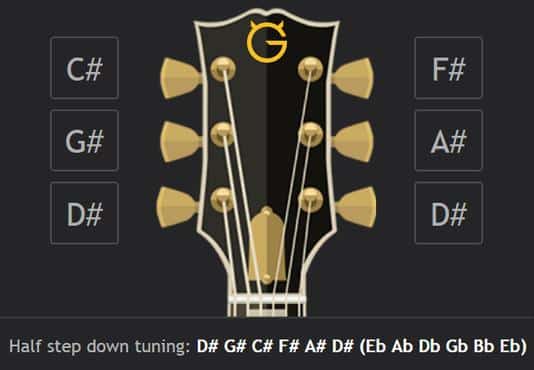
When I first started exploring the world of alternate guitar tunings, I was amazed at the depth and breadth of musical versatility that different methods could impart. Among the numerous techniques available, lowering the pitch of a guitar half a step down stood out for its unique impact on the music and the notable ease it provided for singers. Let me delve deeper to convey why this method could add a new dimension to your guitar playing style.
Did you know a lowered pitch can add richness to the music and make singing along easier? This might honestly sound counterintuitive initially, but as I came to appreciate, the lower pitch of guitar strings has a distinct effect that can indeed dramatically change how you perceive and produce your music. It makes the tone of the guitar richer, warmer, and fuller, a tone that resonates deeply and enhances the music’s overall atmosphere.
Furthermore, there’s an inherent practicality to this method that might go unnoticed. Transpose guitar chords half a step down and you’ll immediately notice that it makes singing along markedly easier, particularly for those with a lower voice range. This approach allows the singer to comfortably reach the song’s high notes without strain, resulting in a smoother, more relaxed vocal performance.
Moreover, it’s worth noting that several professional musicians have adopted this tuning technique for exactly these reasons. In their pursuit of a unique and differentiated style, artists ranging from Jimi Hendrix to Stevie Ray Vaughan have found value in the expressive potential this alternate tuning offers.
In conclusion, understanding why to tune a guitar half a step down is about understanding the delicate balance between musicality and playability. It’s about discovering that through a small shift in your guitar’s tuning, you can not only add texture and warmth to your music but also make the act of singing along significantly easier, broadening your creative possibilities exponentially.
So, if you’re ready to explore a new world of musical potential, I encourage you to embrace this half step down tuning. With every string that lowers its pitch, you’ll be stepping bravely into new territories of your personal musical journey. This tuning is not a mere technicality but a gateway to a more profound musical expression.
Understanding Half Step Down Tuning
Musical Intervals in Half Step Down Tuning
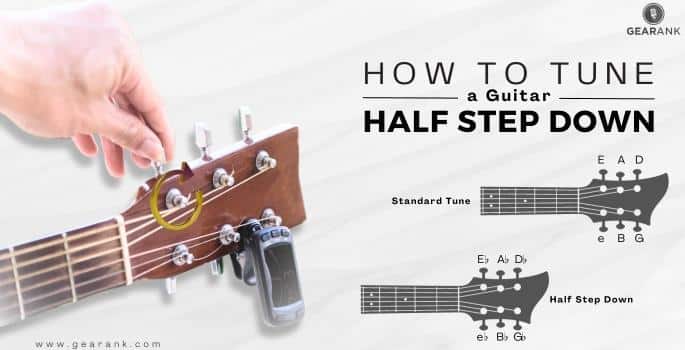
In the prismatic world of guitar tuning, the subtle shift of a half step down tuning stands as an influential component that can significantly alter musical intervals, casting new dimensions onto the music. As a seasoned author who regularly pens instructional manuals on guitar techniques, I find the discipline of dissecting these intervals refreshingly complex yet evocative.
When I tune my guitar a half step down, I’m aware of the profound impact, each string vibration carrying the poignant shifts in musical intervals. This adjustment not only modifies pitch but inevitably impacts interval relations, consequently invigorating my music with more profound, rich undertones.
Emphasizing the vital role of musical intervals in half step down tuning is a cornerstone of my educational strategy, as it paves a path to understanding the inner mechanics of this tuning form.
Actively analyzing these intervals, in my experience, enhances the ensuing musical output, bestowing a unique charisma to the composition. This deeper, intimate knowledge of intervals in half step down tuning significantly extends the possibility of musical expression, contributing a critical edge to your guitar playing proficiency.
As we venture further into the intricacies of half step down tuning, this nuanced understanding of ‘musical intervals’ will serve as the guiding compass, laying a solid foundation towards mastering guitar chords and scales in the context of this tuning method.
Impact on Guitar Chords and Scales
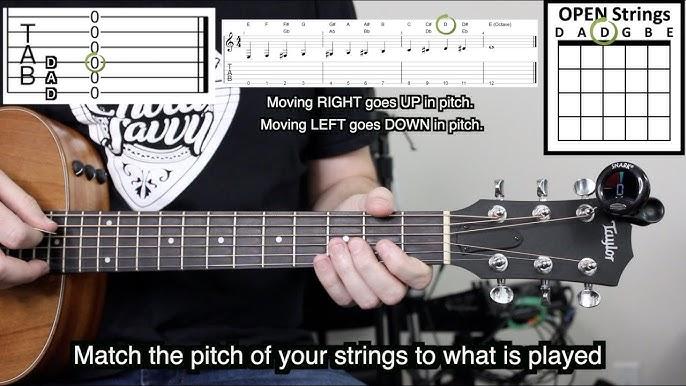
Following our dive into musical intervals within half-step down tuning, it’s fundamental to address its distinct impact on guitar chords and scales. Over my years of writing and arranging, I’ve discovered that a crucial expression of this unique tuning lies in the need to transpose guitar chords effectively.
This transposition process involves mapping standard tuning chords to the corresponding chords in this lower tuning. By recognising the placements of notes on the fret board in relation to your new root note, you can adapt chords in a way that retains their harmonic value, despite the shift in pitch.
An advantage to this understanding is that your existing finger positions remain mostly unchanged, which offers a smooth transition. However, it’s essential to remember that the scales will sound a half step lower. This could add a new richness to your sound, expanding your musical possibilities.
In conclusion, half-step down tuning might necessitate chord transposition, but with the correct application, it can broaden your musical horizons, achieving a gamut of subtle tonal changes to your melody and harmony.
Next, let’s take a hands-on approach to tuning your guitar a half step down, using this newfound understanding of its effects on chords and scales.
How to Tune Your Guitar Half Step Down
Guitar Setup for Tuning
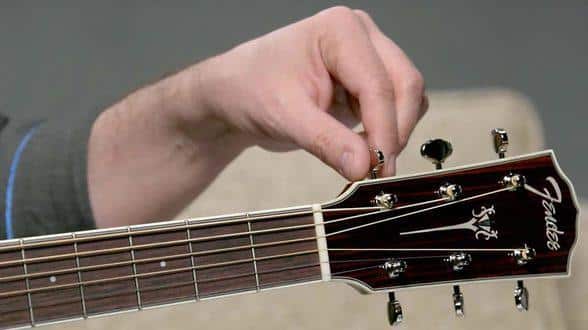
As we progress into the methodological part of our guide, I wish to emphasize the role of guitar setup for tuning in this process. Decades of personal experience and teaching have proven to me that a well-setup guitar can significantly ease the process of tuning, especially when aiming for a half step down tuning. It not only makes the procedure smoother but also assists in maintaining the stability of the tune.
When preparing your guitar for tuning, begin by cleaning your guitar for any dust or grime that could impact the accuracy of the tuning. If your strings are old, replace them. Fresh strings are much easier to tune and hold their tune better. Ensure there is proper intonation by carefully assessing the guitar’s saddle and nut. They should be precisely aligned to prevent any pitch inconsistencies while playing different notes on the fretboard.
Moreover, pay attention to the neck of the guitar; its curvature can drastically affect the tuning. A guitar neck with the right amount of relief makes sure the strings have just enough clearance from the frets. This, in turn, allows for proper vibration and ensures the resonance is neither buzzed nor muted.
Equipped with a well-set-up guitar, you can now move on to the finer elements of tuning it half step down. Insightful comprehension and consistent practice of guitar setup for tuning will provide the foundation for exceptional mastery over guitar maintenance and tuning. We’ll continue this comprehensive guide by focusing next on adjustments that can be made during the tuning process.
Adjusting the Tuning Pegs
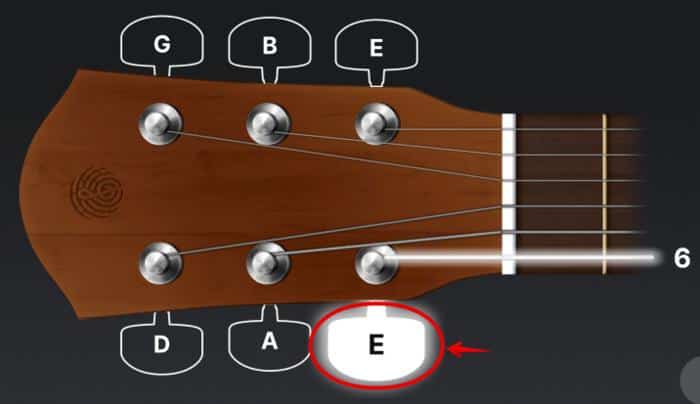
Over the years, my fingers have turned countless tuning pegs in my quest for sonic perfection. The very heart of the guitar tuning process resides in the nimble artistry of tuning peg adjustments. Each fine alignment brings you closer to achieving the desired sound. It’s a skill that expands beyond just turning the pegs on your guitar. It is the key to precisely putting your instrument into half step down tuning.
How does it work? Using a gentle touch, turn your guitar’s tuning peg slightly counterclockwise to lower the pitch. It’s about understanding the delicate balance of pressure that’s required, hence the significance of your experience in adjusting these pegs. The trick is to turn the pegs slowly and patiently, while persistently plucking the string to check the sound.
As emphatic as it might seem, it’s crucial not to rush or force these adjustments. Turning a peg too much, too rapidly might cause the string to lose its tension or even snap. What we need is a smooth, gradual lowering in pitch until the string is in tune. Not to mention the impact on the durability of your guitar, but that’s another story. And it’s all worth it when you finally strike that chord, and your guitar sings in the perfect half step down key.
Let’s now take a look at tuning with a tuner and alternatives within the next section.
Tuning with a Tuner and Alternatives
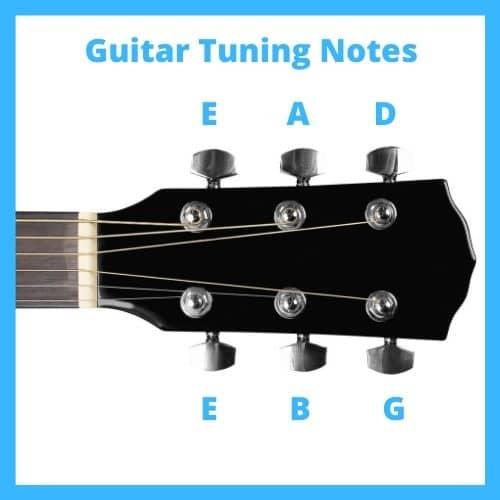
Let’s now proceed to another vital part of our journey: the tuning process. During my years as a freelancer and an editor, I had the opportunity to explore multiple tuning methods. From tuners to capos, each method possesses its unique charm. Let me take you through my experiences.
Firstly, the tuner. This is my go-to tool whenever I need accuracy and efficiency. If you’re wondering how to use a tuner for half step down, to put it simply, you set the tuner to the half step down note for each string, play the string, and adjust accordingly. Presto! Your guitar is in tune. Fingerpicking or strumming, the result is the much-desired tonal clarity and balance. Do remember, tuning is not a one-time affair but a recurring process, as strings tend to lose their pitch over time.
Imagine an array of tuning methods at your disposal. Are you ready to explore and expand your choices? Enter capos. The benefit of using a capo for half step tuning is that you’re not altering the tension of the strings, thus preserving the guitar’s native feel. Place it on the appropriate fret, and your strings are automatically tuned a half step down. You play as you usually would, but now you’re dealing with different root notes, all a semitone lower.
Apart from accuracy, there’s a certain elegance in using a capo. For acoustic guitar players who rely heavily on open chords, a capo can be an invaluable tool. However, it’s not a one-size-fits-all solution. Some musical styles or songs require the traditional down-tuning method using the tuning pegs.
In conclusion, each method has its advantages and purposes. A tuner provides precision; a capo allows immediate transposition while maintaining string tension. There are other alternatives, such as pitch pipes and tuning forks, but I’ve found tuners and capos to be the most convenient and practical.
Always remember, the key is to find what works best for you and your style of playing. Experiment with different tuning methods, broaden your horizon, discover your comfort zone. My ultimate objective has always been to help create a seamless tuning experience, achieving the desired sound while maintaining ease and playability.
May your strings always be well-turned and your music resonate with your heart. Next, we shall delve into some common queries regarding the half step down tuning!. Stay tuned, literally and figuratively!
FAQs
What is Half Step Down Tuning?
Half Step Down Tuning, also known as one semitone down tuning, is a type of guitar tuning where each string is tuned down by a half step or one semitone. This means your guitar’s tuning will be E♭, A♭, D♭, G♭, B♭, e♭ from the thickest to thinnest string.
Why would I want to tune my guitar half step down?
Half step down tuning offers a different tonal sound spectrum that can influence the mood of your music. It also slightly reduces the tension on your guitar neck and can make it easier for vocals to match pitch with songs. Certain genres like blues, rock and metal often use half step down tuning to achieve their distinctive sound.
How can I tune my guitar half step down?
First, ensure your guitar is in standard tuning. Then start with your low E string (the thickest one) and lower the pitch until your tuner reads E flat (E♭ or D#). Repeat this drop of a half step with all the strings in order: A becomes A♭, D becomes D♭, G becomes G♭, B becomes B♭, and high E becomes E♭. Always remember to fine-tune after for the best results.
Conclusion
Stay tuned as we summarize this glorious exploration of the half step down tuning. Ready for one last strum? We’ve delved into why one might tune down a guitar, enriching our tonal vocabulary and making it easier on the fingers. We’ve broken down the semantics of half step down tuning and how it impacts guitar chords and scales significantly.
We spoke about the importance of a proper guitar setup for tuning and the role of tuning pegs adjustment in achieving the desired sound. By understanding the significance of using a tuner and alternative methods, we gained an expressive and engaging anchor for our musical journey.
Reflecting on this journey of tuning guitars half step down, it feels like flipping through the pages of my life. The vibrance of alternative tunings has added shades to my musical canvas. By constantly exploring and innovating, we can profoundly savor the joys and challenges of making music.
We’ve spanned a thrilling array of topics, providing you with all the knowledge and tools you need. Now that we’ve harmonized our understanding of how to tune a guitar half step down, it’s time to grab your guitar, tune it down, and let the music speak.

